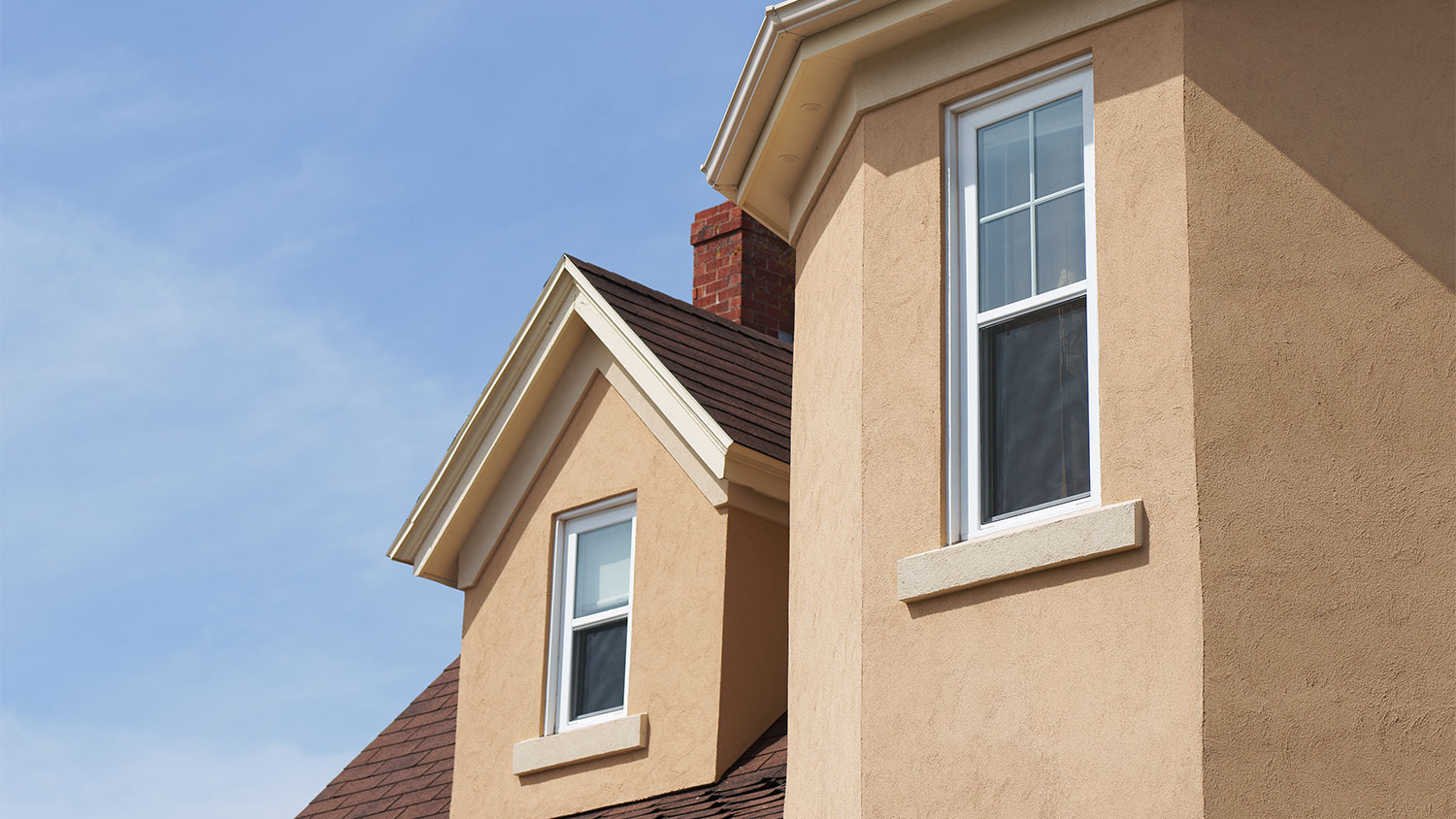
Discover the cost to stucco a house in 2025, including average prices, key factors, and tips to help you budget and plan your stucco project with confidence.
There’s good and bad on both sides of this debate


Stucco siding is ideal for homeowners who value durability and live in areas prone to fire and pest problems.
Stucco is versatile, and repairs can be straightforward if you choose a textured surface that can hide patches easily.
Stucco absorbs water, so it’s not ideal in areas that see heavy rainfall.
Stucco is challenging to install, so it typically requires help from a pro.
Common alternatives to stucco siding include vinyl, wood, and fiber cement.
Curb appeal is important, but your home’s exterior also needs to stand up against issues like weather, fire, and bugs. Stucco siding is a common option, especially in hot, dry climates, but is it the best one for your home? Understanding stucco pros and cons will help you decide if it’s a good fit for your home, budget, and climate.
When taking on this project, expect questions only a pro can answer. With our network of local pros, you'll get the job done and your questions answered—without the hassle and stress of doing it yourself.
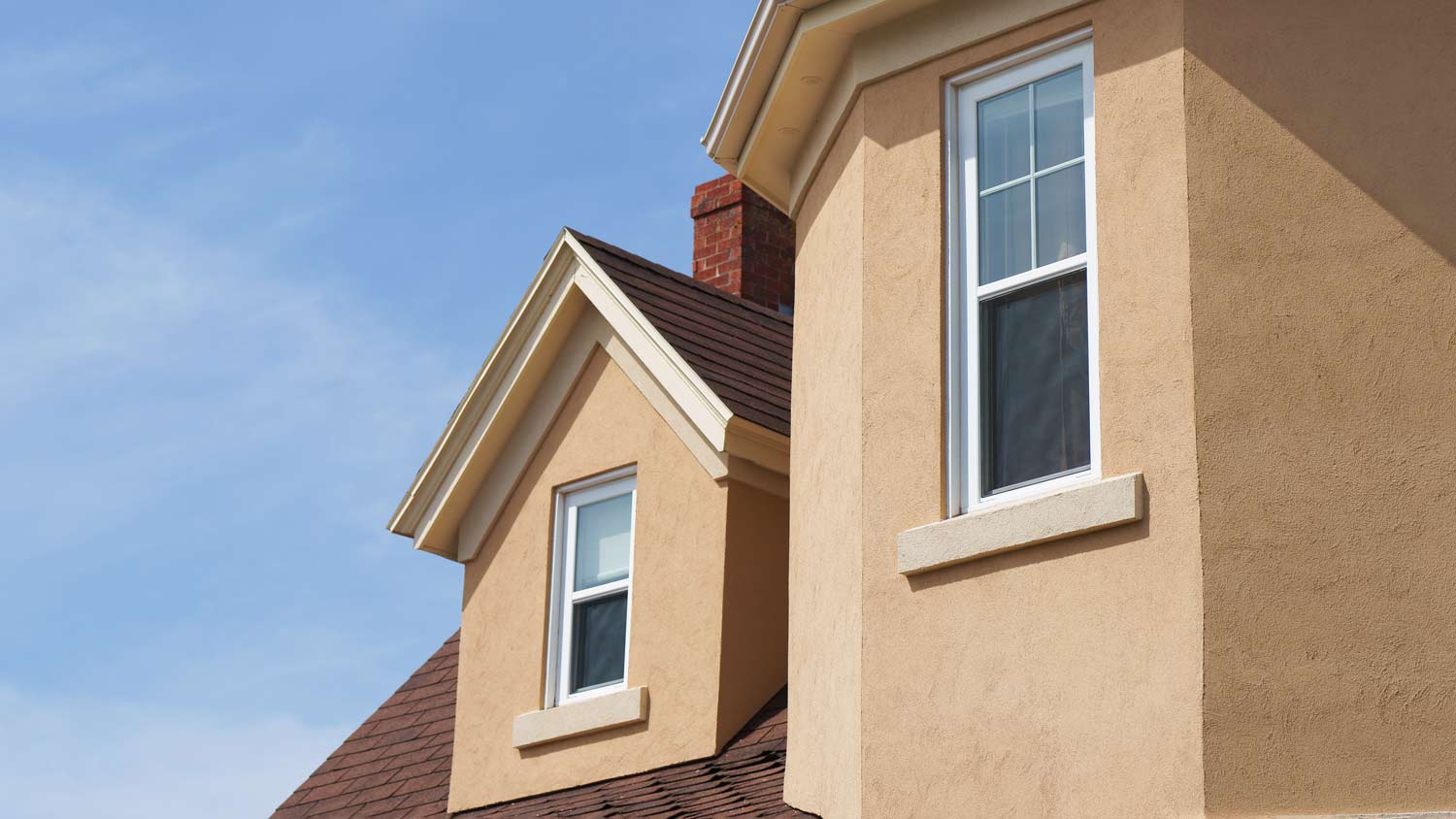
Stucco is a type of siding made from a mixture of Portland cement, sand, lime, and water. A professional who does stucco normally applies the cement-based exterior finish in three layers—a scratch coat, a brown coat, and a finish coat—to create a seamless, textured surface on the outer walls of your home. More modern stucco applications sometimes use an EIFS siding system, which contains six layers, some of which are designed to drain water from behind the stucco.
Stucco is a great choice for siding as it is incredibly durable and fire-resistant, though it needs to be done right, which requires multiple coats and time allowed for proper curing.
The scratch coat is the first layer of stucco that adheres directly to the base material of your house. True to its name, it creates a scratched, rough surface that helps the other layers stick to it. The brown coat smooths out the exterior surface while also adding thickness and bulk. The final layer, known as the finish coat, is customizable when it comes to color and texture.
Stucco siding has long been a favorite for many reasons. Its application process already hints at its durability and versatility, but it’s not perfect.
| Pros of Stucco | Cons of Stucco |
|---|---|
| Durable | Not for rainy areas |
| Long-lasting | Hard to install |
| Curb appeal | Difficult to paint |
| Customizable | Frequent maintenance |
Whether you’re considering stucco for a new build or curious about using it to reface your home’s existing exterior, there are plenty of reasons to choose stucco siding. The material is known for its durability, long lifespan, curb appeal, and customizability.
Stucco is cement-based, so it’s resistant to fire, rot, and pests, including termites and carpenter ants. Stucco siding adheres directly to your home, so it’s impossible for wind to get behind it and tear it off—an issue you may face with other siding materials in areas that see extreme weather. Provided you don’t expose stucco to constant moisture, it will hold up better than most other siding options.
On average, stucco siding lasts for 50 to 80 years. With professional installation, routine maintenance, and favorable weather conditions, homeowners can stretch the lifespan of stucco siding to 100 years or more. The only other siding materials that last this long are stone and brick, and those usually cost two to three times as much as stucco.
Stucco is prized for its curb appeal, especially in hotter climates, where it provides some extra insulation and boosts home energy efficiency. In these climates, especially, stucco boosts home value and often provides a higher ROI than average. It may stand out in areas where it’s less common, but it still creates a traditional look that most homeowners love.
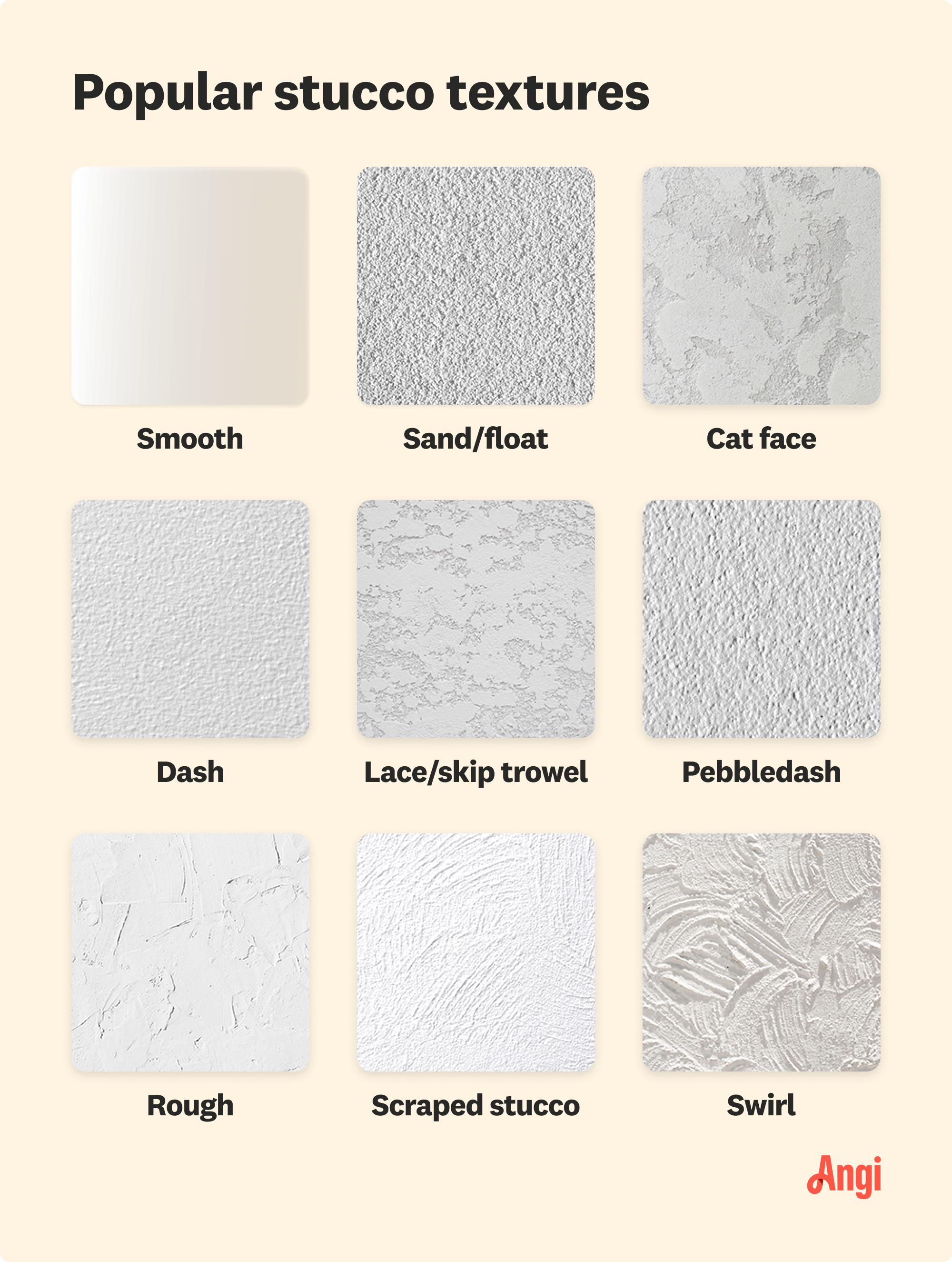
Stucco offers a wide range of styles and design options, and you can customize the look with different stucco finishes, from smooth and sleek to rough and rustic. You can tint the finish coat to virtually any color, and stucco is paintable, so you can even change the color and look after you have it installed.
While stucco siding is an ideal option for many people, it’s not right for everyone. Some homeowners stray away from stucco because of its weather restrictions, frequent maintenance, and difficulty in painting and DIY installation.
Stucco is great in hot, dry climates but isn’t ideal in areas that see wide temperature swings, extremely cold temperatures, or heavy rain.
Stucco will expand and contract with changes in temperature, and if those changes happen quickly or are severe, the stucco can crack in response. This will mean more maintenance for your stucco siding, driving up ongoing costs. In areas that see freezing temperatures, moisture from humidity, rain, snow, and ice can get trapped and freeze beneath the surface. This can eventually cause cracking, water damage, and mold.
Stucco is also ideal for drier climates. Since it’s a porous material, constant exposure to moisture can lead to mold and mildew growth, as well as water damage to the building materials behind your siding.

If you’re looking for a DIY siding project that doesn’t require a heavy lift, look somewhere else. Installing stucco siding demands experience, skill, technique, and specialized tools. The installation can take weeks because the process involves preparing your home’s exterior surface, monitoring the weather for ideal conditions, checking local building codes, applying multiple layers, and letting each cure appropriately.
It’s possible to install stucco yourself, but poor stucco installation can lead to a big, expensive stucco repair or replacement. The best way to guarantee a job well done is to hire a local stucco contractor. Just keep in mind that the cost for this labor-intensive siding material will be substantial.
One of the reasons that stucco is so durable is that it isn’t flexible, but its rigidity makes it prone to cracking. These cracks happen when the material expands and contracts because of changing temperatures or humidity, and they can even result from shifting soil under or around your home’s foundation. Fixing stucco cracks can be a relatively simple job if you choose a rough stucco texture, but it can be an expensive and challenging endeavor if you go with a more modern, smooth texture.
You should plan on inspecting your stucco at least once a year in order to find and repair small cracks before they get worse.
There are several reasons why painting is one of stucco’s most common problems. Its porosity makes it challenging to achieve an even, consistent finish without applying multiple coats. The material will soak up paint, meaning the job takes longer. Your stucco texture can also complicate the painting process, as it can be difficult to cover all the nooks and grooves.
And you can forget about painting shortly after a storm. Painting over damp stucco can trap moisture beneath the paint and cause aesthetic issues, like peeling and bubbling, or bigger problems, like mold.
If you don’t like stucco or don’t think it’s a good fit for your home and climate, you have plenty of other siding materials to choose from. Some of the most popular siding options among homeowners include the following:
Vinyl: Vinyl siding is the most common option because it’s one of the most affordable but still offers good longevity. It’s much easier to DIY than stucco, and repairs are less common and more affordable.
Wood: Wood siding, like stucco, is best in dry areas where moisture won’t rot the wood or promote pest infestation. Wood is not right for you if you live in an area prone to wildfires. Provided you don’t, it creates a timeless look for your property.
Fiber cement: Fiber cement is an increasingly popular siding option because it’s relatively affordable, extremely durable, and stands up well to moisture, fire, and changes in temperature and humidity.
Metal: Metal siding can be an affordable option if you go with aluminum over steel. It’s fire-resistant and won’t rot or decay even with exposure to heavy moisture. However, it’s prone to denting, and some homeowners don’t like the appearance.
Stone: Stone siding is one of the most aesthetically pleasing options. It can easily last 100 years or more with minimal maintenance, is fire-resistant, and can stand up well to moisture. However, it’s the most expensive siding material, costing up to three times as much as stucco and vinyl.
Brick: Brick is another siding option that’s beautiful and timeless. It stands up well to fire and water, but constant exposure to moisture can lead to expensive repairs. With good maintenance, it will last 80 to 100 years or more. However, it’s the second most expensive siding material, costing twice as much as stucco.
If you already have stucco siding and want to swap it for one of these options, you can remove stucco yourself. Doing so will save you $2,000 to $3,000 over hiring a professional, but it is a labor-intensive process.
Stucco siding is ideal for homeowners who value durability, longevity, and aesthetic appeal and live in relatively dry areas with moderate climates. Stucco is among the most fire-resistant siding options, so it might be perfect if you live in a dry area prone to wildfires.
Stucco could also be a great option if you’re not put off by occasional maintenance and inspections to manage minor problems like small cracks and chips, especially in exchange for a long siding lifespan.
Stucco is probably not the best option if you get a lot of rain in your area, or if you’re someone who wants to install siding and not worry about cracks in your siding or maintenance for decades. If that’s the case, you may want to splurge on brick or stone siding, or keep things simple with vinyl siding.
From average costs to expert advice, get all the answers you need to get your job done.

Discover the cost to stucco a house in 2025, including average prices, key factors, and tips to help you budget and plan your stucco project with confidence.

Get transparent stucco inspection cost info. Learn what impacts price, how to save, and what to expect before hiring a pro for your stucco inspection.
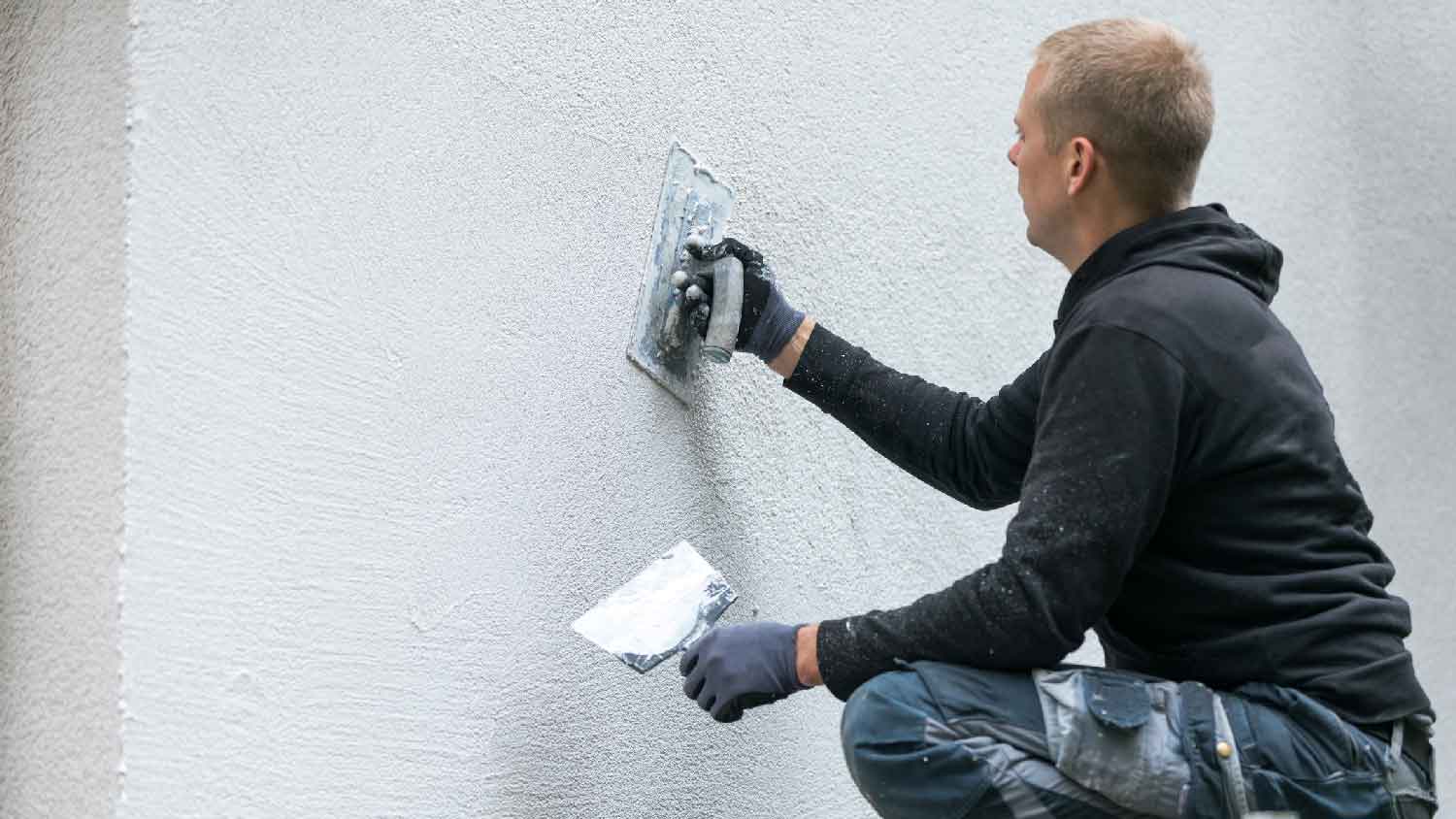
Discover the average stucco repair cost, key price factors, and ways to save. Get expert tips to budget your stucco repair project with confidence.
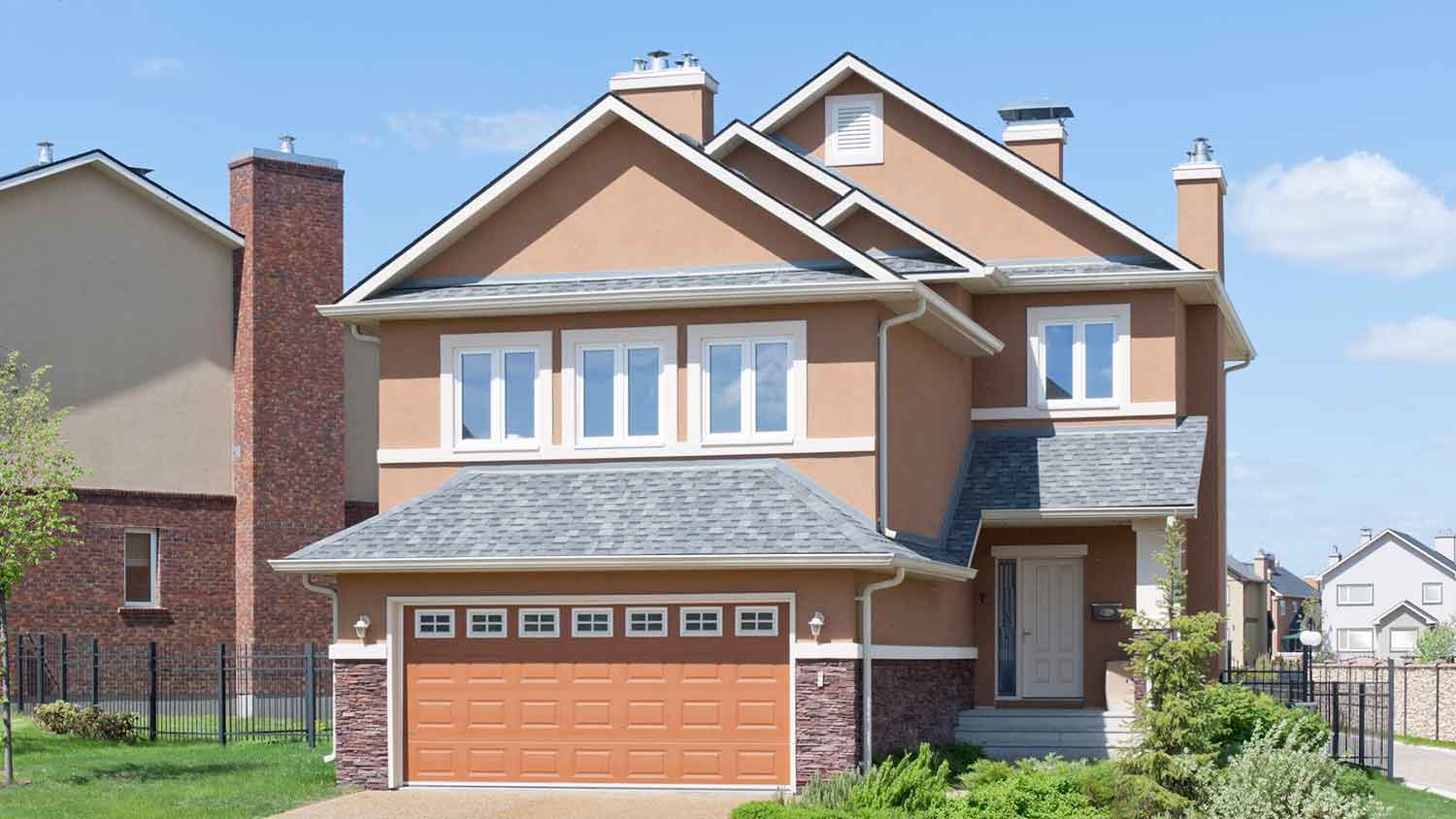
EIFS stucco is a common alternative to traditional stucco, but it comes with some drawbacks. Learn about six EIFS problems and how to solve them.

Weigh the pros and cons of painting stucco—and estimate the final cost—before calling your local painter.
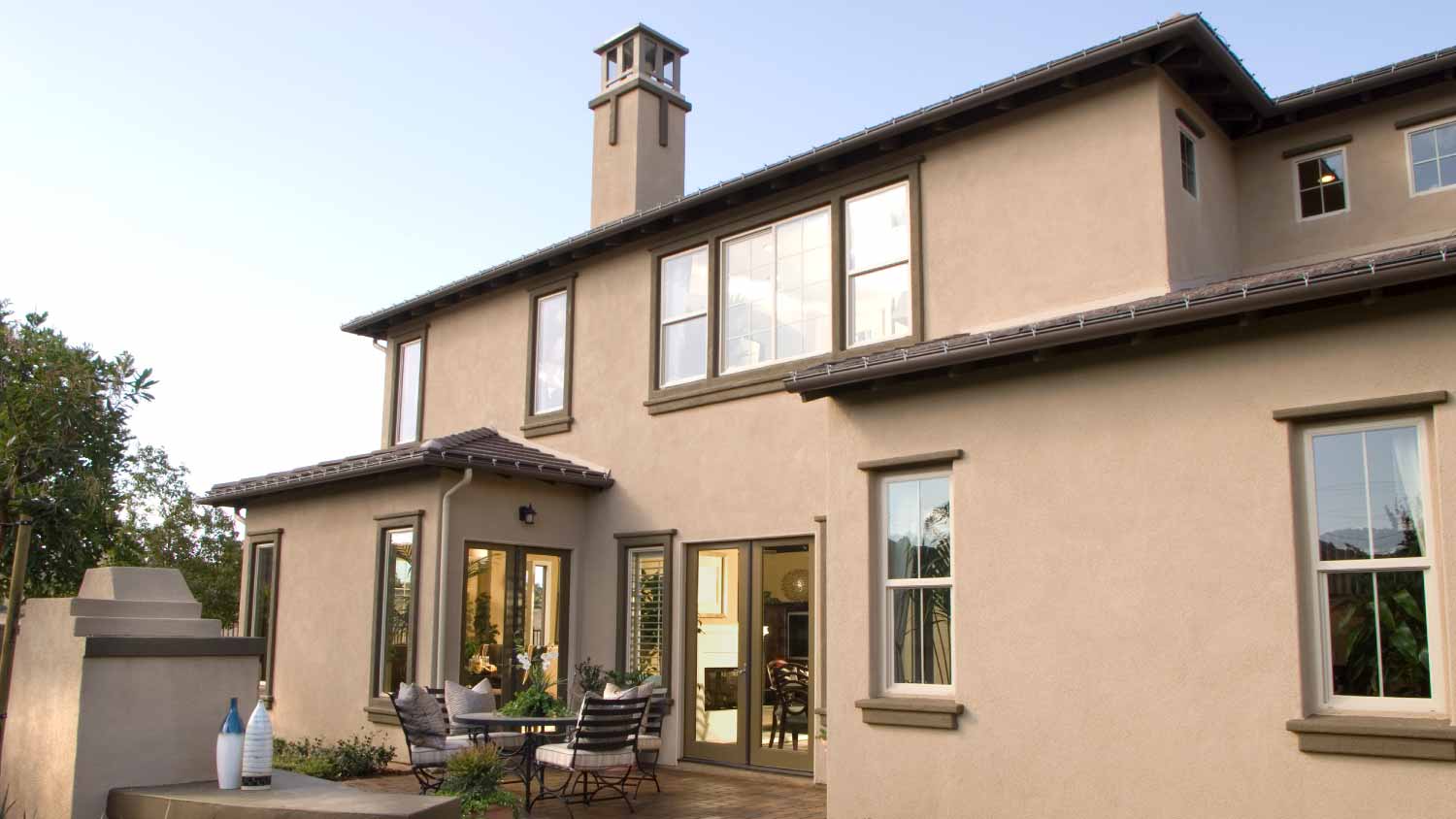
Choose the right pro for stucco installation to get the best professional-quality results. Learn who does stucco installation and the benefits of hiring a pro.